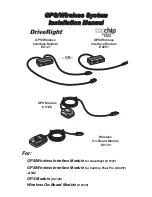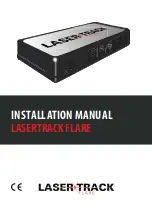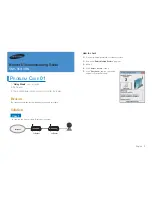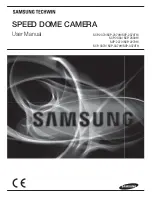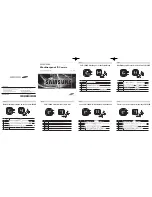
Freedom Lite Installation Manual Revision 12
P a g e
12 | 30
9.
Always ensure that you have enough people on hand to perform the operation safely,
i.e. at least one person to guide and stabilise and one person to hoist or handle the
pallet jack or gantry.
10.
The gantry can be configured for wall mounting – when using the gantry in this
configuration absolute care must be taken to prevent the gantry from being pulled
over by non-vertical tension on the rope.
4.
Connecting the Freedom Lite
4.1
Power Cables
The Freedom Lite is simple to connect to the battery inverter. First of all you will connect
the 48V positive and negative cables to the inverter terminals using the applicable lugs.
Caution: Prior to connecting the positive and negative cables to the inverter be sure to
check that the main battery circuit breaker is switched off. This will ensure that there are
no short circuits between the loose ends of the cables.
The cables are supplied with the Freedom Lite, permanently fixed into the unit and secured
onto the casing using compression cable glands. Attach crimp lugs to the ends of both cables
ensuring that the correct terminal size is used and the lug is matched to the size of the
cable. The positive cable is red and the negative cable is black. This is confirmed by + and –
signs on the battery casing beside the respective cables. See Tables 2.1 for the cable size
and quantity fitted to each Freedom Lite model. The cable cross sectional area is based on
an acceptable voltage drop with the inverter being mounted on the wall adjacent to the
Freedom Lite battery so that the cable run is less than 5m (note however that the standard
cable length is 1,8m, longer cables available on request).
Cable runs longer than 5m should be assessed and larger cables considered for extending
the Freedom Lite cables to minimise voltage drop. Double Insulation welding cable is
recommended.
The cables may be routed through trunking and connected into the inverter on the positive
and negative terminals respectively. The inverter terminals on most inverters can then be
used for linking up the charge controller(s) to the DC Bus. On Installations where there are
too many inverters and/or charge controllers to connect to the DC bus using the inverter
terminals as a junction point a DC connector box is required. Where more than one cable is
fitted per pole, the battery cables can be separately routed directly to separate equipment
(inverters and charge controllers) – if this is done the installer must take care to ensure that
any one of the cable pairs will not be overloaded. The cables for each pole are connected
together inside the battery.





























